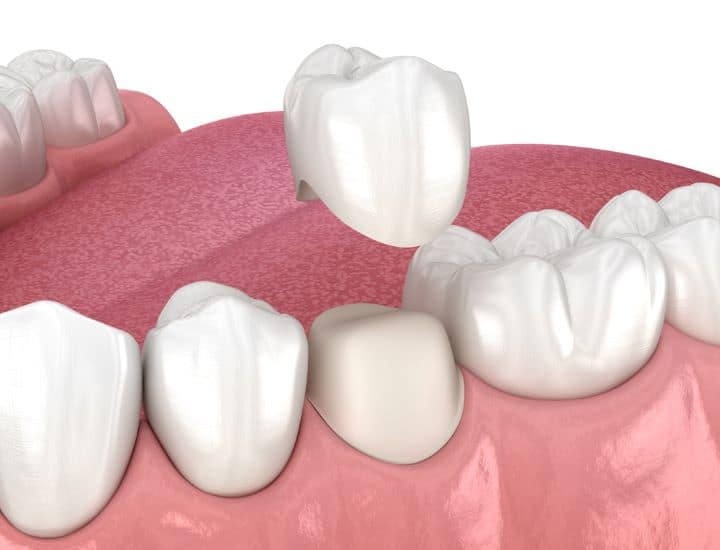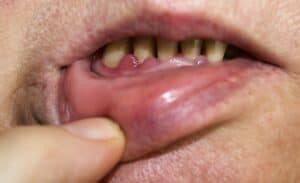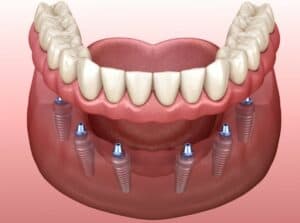Flossing alone cleans 40% of your tooth surface, and it plays an important role in your oral health maintenance.
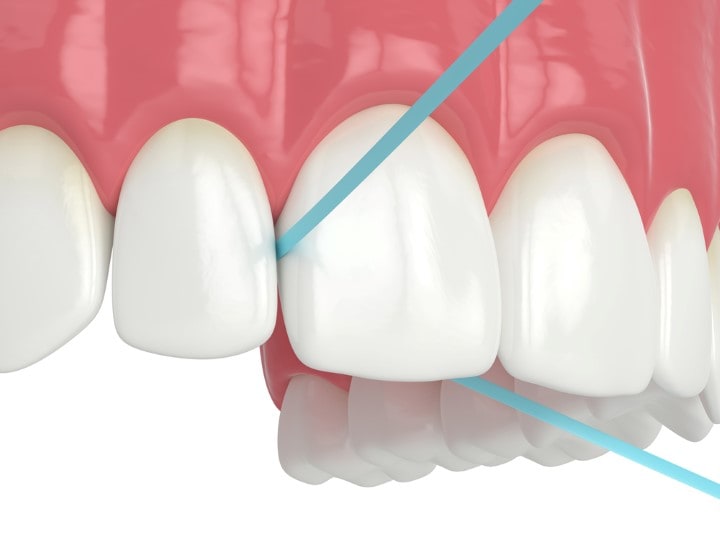
It removes the food debris and the bacteria that collects between the two teeth, which, when not cleaned, can lead to dental cavities and gum diseases.
It allows the removal of the breeding ground for bad bacteria in the mouth, which, if stayed, can lead to halitosis (bad breath). Here, we’ll talk about flossing in detail, and by the end of the article, you’ll learn how to floss properly.
Understanding the Importance of Flossing for Dental Health
60% of Americans don’t floss their teeth regularly. It’s important to understand that brushing alone may not meet all your oral hygiene needs.
Brushing twice daily for two minutes each is the primary step in maintaining and restoring the health of teeth and gums. However, standard toothbrushes can’t reach between your teeth.
And to get access between teeth, you must learn to floss them. The area between two teeth tends to harbor more plaque with bacteria in them. This plaque may convert into tartar and calculus over time.
Hence, the bacteria that comprise most of the plaque and calculus cause dental cavities and periodontal diseases. For this reason, the American Dental Association recommends flossing once daily.
Flossing eliminates food particles lodged between your teeth, gently removing debris without causing harm to your teeth and gums. It’s crucial to remember that neglecting this routine can lead to significant expenses for extensive dental repairs.
Is It Necessary To Use Floss Threader to Clean Between The Teeth?
No! There are a lot of other cleaning aids that you might use to reach between your teeth. Although flossing is an integral part of an oral health maintenance routine, flossing can be achieved with aids other than dental floss. There are a lot of other cleaning aids, which include dental tape, interdental brushes, water flossers, air flossers, and sticks/picks.
Proper Flossing Technique
Learning to use the floss threader correctly is key to maintaining good dental hygiene. Follow these steps to clean plaque and bacteria from between your teeth.
Step # 1 – Hold the 18-inches of floss the right way.
The right length of floss will help you clean the debris between the teeth. Usually, 18 inches of floss can do the justice.
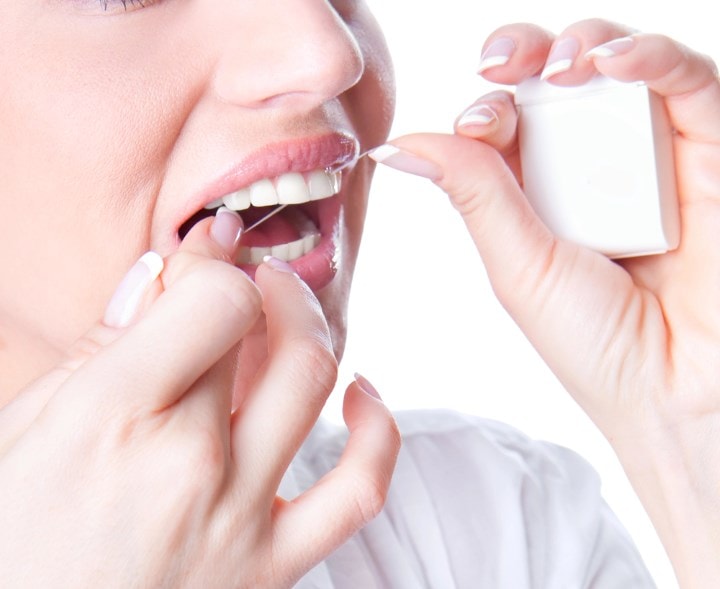
Hold the floss around your thumbs and fingers and grip it firmly. Wrap the floss on your middle fingers and the thumbs and leave a part of the floss string untied up to 2 inches.
Guide the floss between the teeth and clean the area with proper flossing motions.
Step # 2 – Learn proper flossing motions
Hold the section of floss in a way that it gets between the teeth below the contact point and clean the area. Slide the floss between the teeth and make sure the floss touches each tooth.
Floss once a day after you brush your teeth properly. Remove the floss and then discard it.
The Benefits of Properly Flossing Your Teeth
Understanding the science behind using a piece of floss to push away the debris from between your teeth will motivate you to adopt the habit of flossing regularly.
Primarily, floss is designed to remove the plaque or the layer of pellicle that sticks between the teeth. While brushing, we scrub the bacteria from the visible surfaces of the tooth, including the chewing surfaces.
However, the standard toothbrush cannot reach the tight spaces between your teeth and gums. To make access to this tight area possible, a dental floss is introduced.
If you don’t properly remove plaque from between teeth, it solidifies over time and turns into a substance known as tartar.
This tartar can turn into calculus, which will, in turn, irritate your gums and teeth. It will start attacking your tooth enamel and can also give you bad breath (halitosis).

If plaque accumulates in the periodontal pockets, it can cause gum diseases like gingivitis and periodontitis. And going back to a healthy state from a diseased state is difficult.
In the worst-case scenario, your teeth become wobbly and will eventually fall out.
Takeaway: Floss teeth properly at least once daily with a fresh section of floss every time.
Should You Brush First Or Floss First?
One of the heated debates that people have between them on different forums, so we believe it’s the right time to answer this question, according to the American Dental Association.
ADA is very easygoing with this approach and doesn’t bind you to brush first or floss first. Choose whatever suits your routine and keeps you motivated, whether it’s brushing first or flossing first.
Different research and examples suggest flossing before brushing is better and vice versa.
However, what’s important here is to stick to your oral hygiene maintenance routine and get yourself checked by your dentist or dental hygienist to know which approach suits you well.
Flossing Before Brushing Pros:
- It allows food particles between your teeth to be dislodged before you brush. It lets the toothpaste penetrate well into the sides of the teeth as well.
- It removes the plaque before brushing between the teeth, so you might not need to put extra effort into your toothbrush to make sure the bristles reach between the teeth.
Brushing before Flossing Pros:
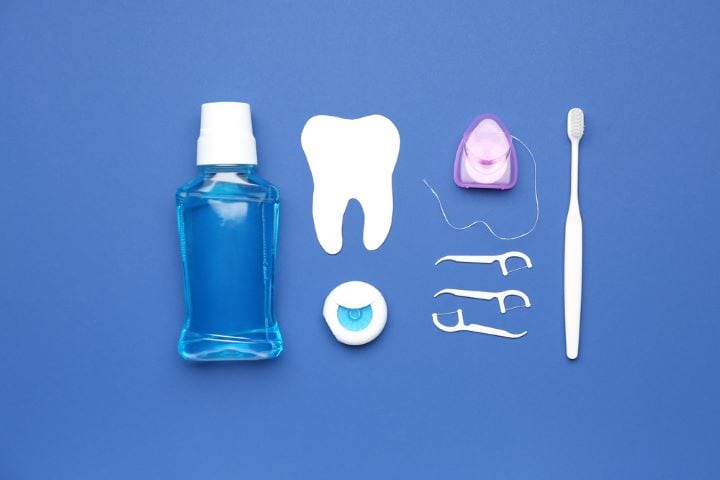
- Brushing first will remove most of the plaque. This will help the fluoride in the toothpaste sink into your teeth better when you floss afterward.
Choosing the Right Dental Floss for Your Needs
Choosing the right dental floss would help you improve your dexterity; however, the end result with all types of flossers is the same. There are different flossing options available in the market, and one must carefully choose the right one according to their needs:
1) Unwaxed Floss:
Thirty-five strands of nylon-based floss are made to slide through tight contact spaces between your teeth. However, as the strands are twisted together, you may see a few strands of the floss separating when you’re done passing through all the teeth.
2) Waxed Floss:
This one is the standard floss available in the market, coated with a light wax coat. This makes it a bit harder to pass it from the tight contacts between the teeth. The good part is it isn’t prone to shredding or breaking.
3) Dental Tape:
A broader and flatter version of the standard floss that may be waxed or unwaxed. With spaces between two teeth, the dental tape tends to clean between the teeth easily.
4) Super floss:
These flosses are stiffer in nature as they are made up of yarn-like material and can be used to clean around braces, dental fillings, and bridges.
5) Polytetrafluoroethylene Floss:
The material used to make this floss makes it highly convenient to slide between the teeth without breaking.
6) Sticks / Picks:
If your dexterity is compromised and you can’t firmly hold dental floss around your fingers, you can choose a dental pick or wand. These allow the back teeth to be cleaned but can miss cleaning the area below the gumline.
Exploring Different Types of Cleaning Aids
1) Interdental Brushes:
If you’re reluctant to use floss, you might use interdental brushes. These little flossing tools go between your teeth to dislodge any food particles or bacteria in them. These are very handy in cleaning around dental braces or dental bridges.
These brushes are designed in a way that they are held in place by a metal wire that can be angled between the teeth. These brushes come in different sizes to meet your needs.
2) Oral Irrigators
This handheld water delivers the water with pressure to push the debris away from above and below the gumline.
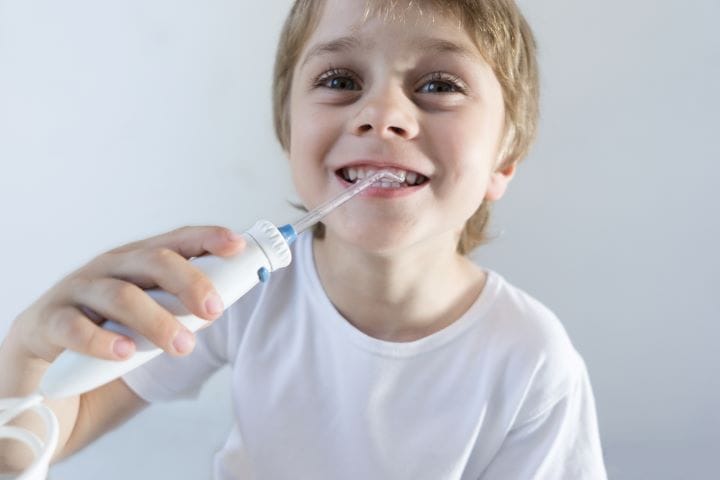
Though this option is not considered as effective as flossing with a standard dental floss, one may use it rather than not flossing at all.
3) Air Flossers
Air Flossers use air and water droplets to remove bacteria and food particles instead of water in water flossers. Again, these are less effective than traditional flossers, and one may only use them to develop initial flossing habits.
Considerations for Flossing with Braces or Dental Work
Cleaning the teeth with a regular floss gets difficult with the braces.
Whether you’re an adult or looking for an adequate brushing flossing technique for your little kids, you must consider that floss can’t slide down between the teeth as the archwire runs all around the arch.
The floss sticks halfway, so you need to thread the floss down between the teeth, and it would need extra care and effort. You might choose other flossing products like floss threaders for braces or superfloss to achieve the purpose.
Pros of Making Flossing a Regular Part of Your Dental Routine – Start Counting
- You’ll achieve cleaner and healthier teeth and gums.
- You’ll eliminate the bad breath you frequently encounter due to periodontal problems.
- Lesser chances of developing caries or periodontal problems.
- You’ll learn a new habit that will help you take care of your oral health all your life.
- You won’t have to use your money or chase after dental insurance to cover the high cost of your dental procedures.
How To Hold The Floss Like A Pro?
To remove plaque from your teeth, you just need to learn how to hold floss easily. An inch or two of floss won’t make any difference.
Get a long floss at least 18 inches long and wrap it around your middle fingers. You’ll use your thumbs and index fingers to control the movement of your floss between the teeth. Bring the floss near your teeth, wrap it around the tooth, and then scrape it. Make sure you don’t hurt the gingiva during the whole process.
FAQ
Is there better floss than no floss?
Any floss is better than no floss. Choose any that you can better adapt to.
Dentists suggest opting for shred-resistant, thicker woven floss that scrapes the tooth well without making you worried about removing the broken floss pieces from the interdental spaces.
How do I remove floss that is stuck between my teeth?
Never use a toothpick! Rinse your mouth with lukewarm water that can cause the floss to disengage. Or you may use a water flosser or an air flosser to help you remove it.
Is it too late to start flossing?
It’s never too late to maintain your oral hygiene. It will be a little hard for you to start with the habit; however, you’ll learn to stick to it over time.
What happens if you don’t floss?
Flossing is an important part of maintaining oral hygiene. Failing to do so can cause bleeding gums, swollen gums, bad breath, and dental cavities.
Daily flossing reduces the risk of plaque accumulation, keeping your teeth and gums healthy.

